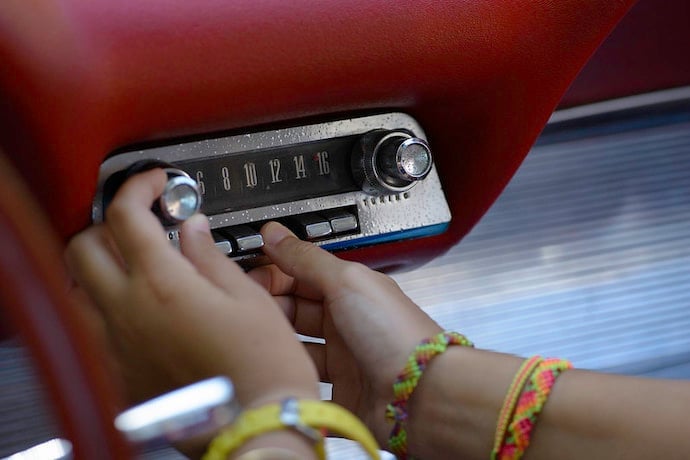Earth’s ionosphere is the boundary between the top of our atmosphere and the beginning of outer space. It is filled with lots of excited electrons that bounce around forming a kind of celestial chain-link fence that protects our planet. The big, destructive rays from the sun hit the fence and bounce back. The smaller rays—like those that make up visible light—zip right through the holes and reach us.
Scientists have known about the existence of the ionosphere for a long time. But it is actually difficult to study. For one thing, you can’t see it. Also, most electronic equipment stops working when it is sent into such a high-energy area. As a result, scientific samples from the ionosphere are few and far between. Since the ionosphere covers the whole globe, getting one sample at a time from one satellite doesn’t answer a lot of questions.
For instance: Is the ionosphere always thick in some places and thin in others? What is the first layer of the ionosphere like? Is it smooth like a placid river? Or is it bumpy? There was just no easy way to find out. Oddly enough, one solution came not from looking up at the ionosphere but from looking down at the ocean floor.
Ping Pong
In 1957, Marie Tharp and Bruce Heezen used sonar to map the ocean floor. They had ships send sonar pings—also known as sound pulses— down to the depths. The pulses would hit the bottom and bounce back up. The amount of time it took for the ping to bounce back up told them if the ship was above a mountain or a valley on the ocean floor.
Researchers thought that perhaps they could do a similar thing with the radio signal from WWV, the radio station run by the National Institute of Standards and Technology. The long-wave radio signals they were using do not go through the ionosphere—the chain link fence. Instead, they bounce down. Short wave signals go through, reaching our satellites and the space station. So what happens is the long-wave signals bounce off the ionosphere then bounce off of the ground and back up again and so on, never leaving the earth’s atmosphere.
Hams to the Rescue
But scientists don’t want to just send out the signal, they want to know what happens to it when it reaches the ionosphere. That’s where citizen scientists come in.
In 2019, researchers from Case Western Reserve University organized amateur radio enthusiasts and told them to be ready to receive tones from WWV. They wanted to see if they could map the ionosphere for one day and see if the data made sense. The citizen scientists’ equipment records the tone and the time it came in so scientists can calculate how long it took to reach the receiver. The tone shifts slightly as it travels. How much it changes is one of the indications of what is happening in the ionosphere.
While the researchers didn’t find anything surprising, they did figure out that they could use citizen scientists to help map the ionosphere, “We have used the event as a template for similar
experiments,” the researchers from Case Western Reserve wrote. “Despite the variety of equipment used by the amateur community, this community science approach shows promise for addressing the problem of undersampling in the geospace system.”
After the 2019 one-day event, WWV researchers and the HamRadio community HamScience…) set up an ongoing project that will help illuminate one of the most hidden parts of our globe, working one long BEEEEEEEEEEEEEP at a time.
Learn More

